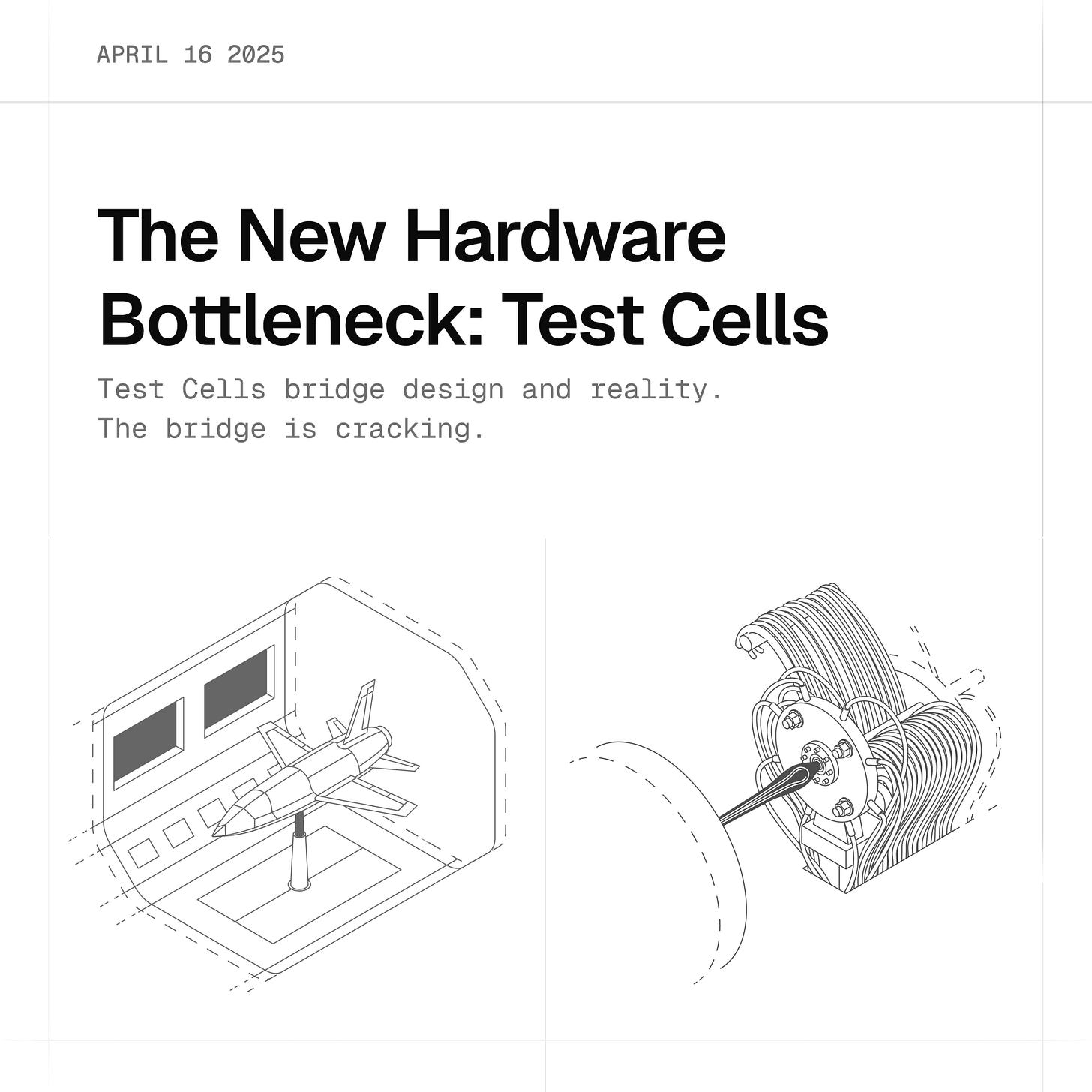The New Hardware Bottleneck: Test Cells
Test Cells bridge hardware design and reality – but they're cracking under increasing strain
Every second at Mach 10 counts.
There’s only one quiet wind tunnel in the U.S. that can run those conditions – at Notre Dame. Miss your window and you’re waiting months. Miss a sensor reading and your program stalls. This is what test cell operators live with every day: limited infrastructure, complex equipment, and zero room for error.
Design cycles are shrinking. Manufacturing is faster. But the gating function for every program is test and validation. Test cells are the bottleneck of the hardware renaissance.
What is a Test Cell?
Test cells are physical environments that replicate real-world stressors: wind tunnels, shaker tables, environmental chambers, altitude rigs, engine dynamometers.
You’ll find them at every serious hardware company – from defense primes to energy startups – as the bridge between design and reality, the crucibles of critical systems.
Test Cells are under strain
Test cells lie at the difficult intersection of urgency, complexity, and significance. As program cycles accelerate, test cell operations are strained:
$1,000,000/day downtime: Every test window is loaded with cost and pressure. If you’re validating a turbine or running a hypersonic profile, you can’t afford bad data or rework.
Handwritten workflows: Test cells are sophisticated, but the software is haphazardly stitched together. Engineers manually parse JSON telemetry, binary Ubin2 files, and HDF5 videos – often with handwritten scripts. One change to a sensor or timing config breaks the whole pipeline.
One Facility, Ten Toolchains: Even within a single site, each DAQ system might follow a different standard. Temperature systems live in LabVIEW. High-rate sensors stream over Ethernet to local disks. Siloed tools cost precious time.
Company-wide audience: R&D wants insight. Operations wants reliability. Manufacturing wants repeatability. But the data lives in tool silos. Test cell operators must synthesize a story from dozens of formats – fast.
Building new capacity isn’t enough
Hardware organizations are investing billions to clear the bottleneck:
Rolls-Royce spent $400M to upgrade its Indiana test campus.
Kairos raised $303M to build a next-gen facility for iterative test.
Honda opened a $125M wind tunnel in Ohio.
But more concrete isn’t enough.
You can’t scale with modern hardware unless you fix how test cells operate.
The current model relies on heroic effort: stitched-together scripts, manual exports, spreadsheet macros. The system “works” – until it doesn’t. You lose data. You re-run tests. You miss root cause. This isn’t scalable.
What test cells need
Test engineers need better tools to help them meet rising demand – tools that ingest anything and output clear, abstracted answers to cross-functional audiences.
Real-time ingestion across high-rate, multi-modal sensors
Synchronized visibility across facilities, disciplines, and vendors
Interactive review tools that easily surface insights for every user – from a software engineer to a combustion engineer
Automated facility monitoring to ensure all systems are functional and calibrated
Centralized, indexed data warehouse to track asset life-cycles and compare results from sim through operations
Flexible test automation with simple integrations to instruments
The way forward: Continuous test
What CI/CD did for software, continuous test can do for hardware. Every run indexed. Every signal searchable. Every system monitored – live.
Test cells aren’t just infrastructure. They’re the fulcrum of the hardware tipping point. And they need the same data tools as every other critical operation.
If your test cell is operating like it’s 2004, but your system is flying in 2025, something will break. Probably at 2AM. Let’s fix it now – before you lose another test window.





